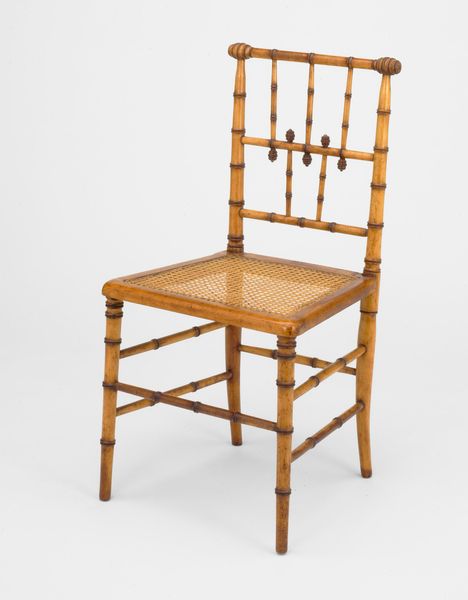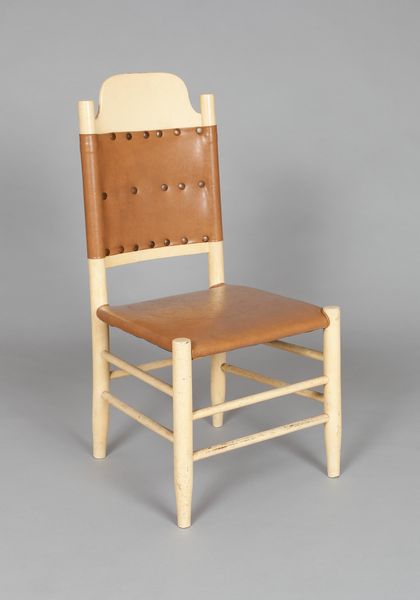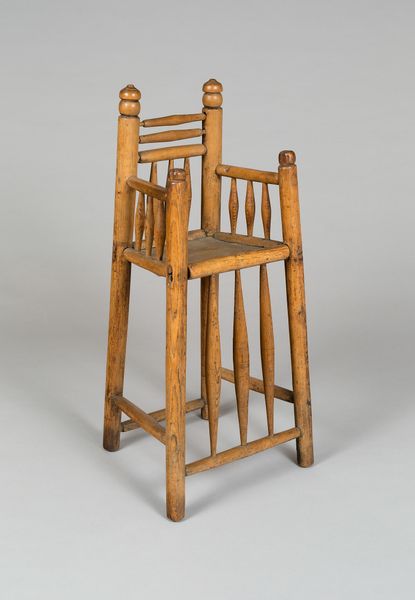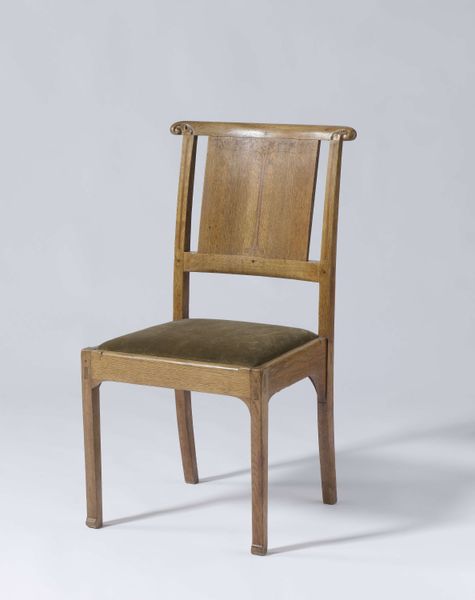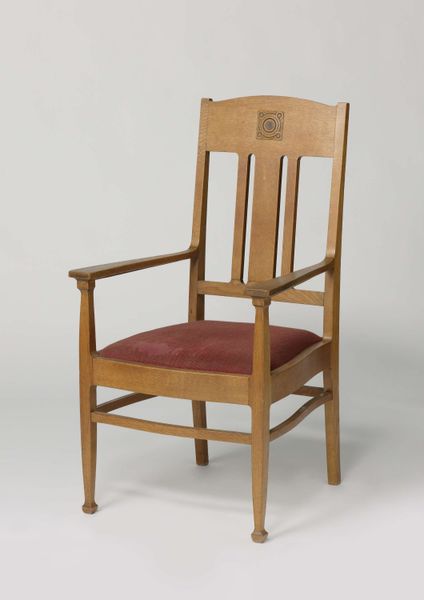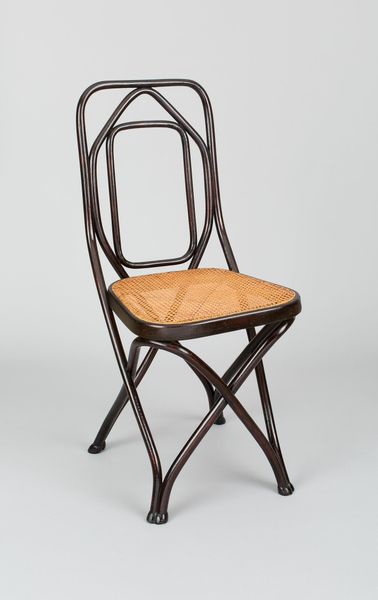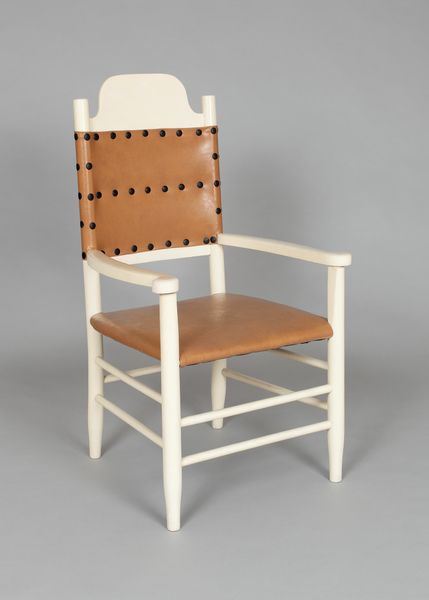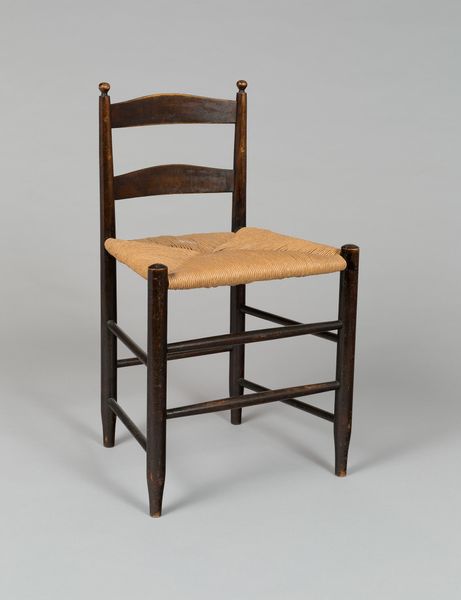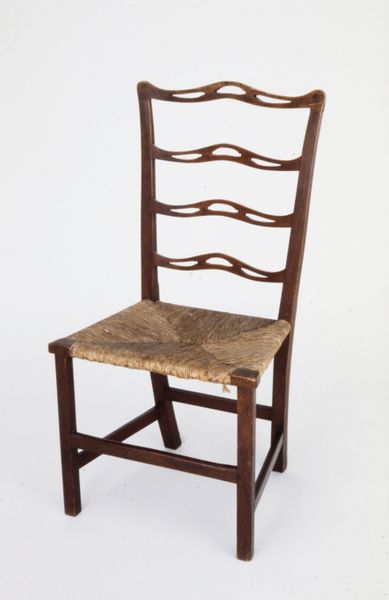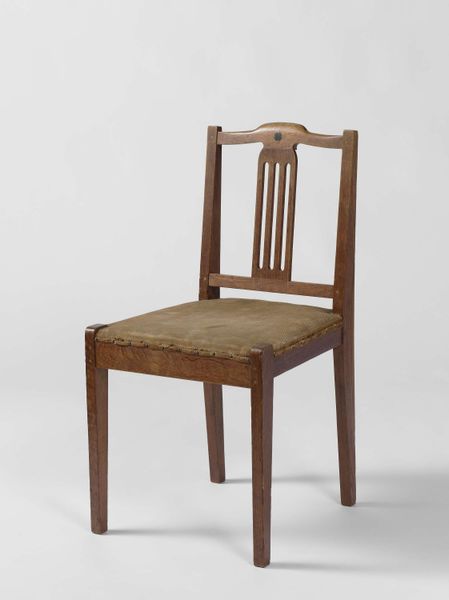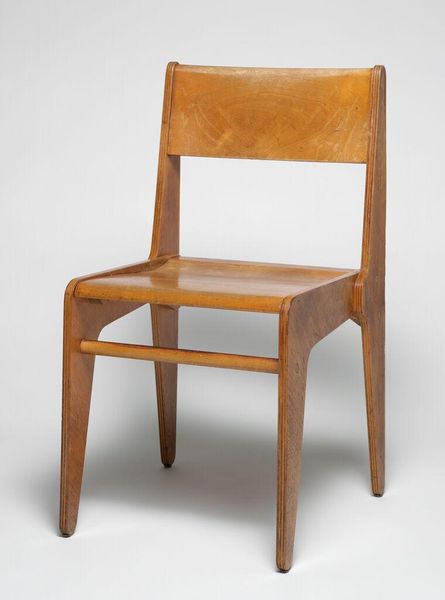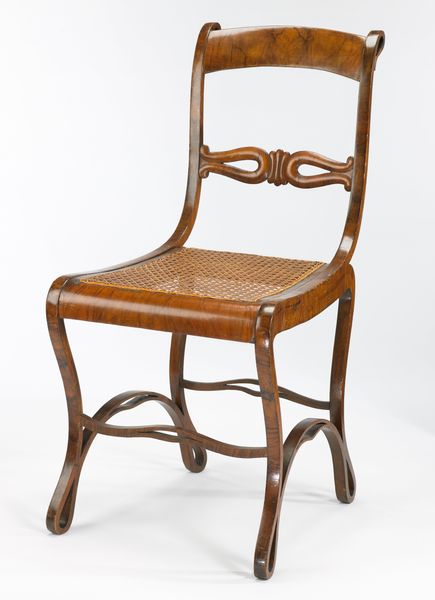
wood
#
folk-art
#
furniture
#
form
#
geometric
#
line
#
wood
Dimensions: 113.6 × 43.8 × 40 cm (44 3/4 × 17 1/4 × 15 3/4 in.)
Copyright: Public Domain
Curator: What a wonderfully understated object! At first glance, I'm struck by how humble it appears—like something you'd find in a Shaker community. Editor: Precisely! This is a side chair, dating from around 1870. The anonymous maker used wood, of course, showcasing a blend of utility and a kind of restrained folk-art aesthetic. What's fascinating is how a common piece of furniture like this speaks volumes about the era’s material culture. Curator: Absolutely. The woven seat itself suggests a hands-on approach to labor, which, in turn, highlights the democratization of craft during the 19th century. You imagine a craftsman meticulously interlacing each strand. Editor: And it's a telling contrast. The straightforward geometry of the design juxtaposed against the more tactile, woven seat reveals the shifting socio-economic values attributed to objects during this period. Furniture becomes not just utilitarian but culturally expressive. Curator: The visual impact resides in this duality—a simple shape that hints at its history and utility. Its modest form highlights function and suggests something made out of necessity instead of luxury. The straight lines almost make it appear severe. Editor: Think about the kind of setting this chair would've been placed in. Most likely, a domestic one. Its ubiquity in these intimate settings emphasizes its crucial role within 19th-century society. Its very presence quietly reinforces socio-cultural norms and behaviors. Curator: Examining such mundane objects truly allows us to engage directly with how previous generations constructed their environments using the readily available resources. Also, notice how even simple techniques can allow someone to manipulate materiality, changing wooden material to make something more or less inviting for sitting. Editor: Indeed. The chair may be anonymous, but its resonance and cultural footprint are considerable. Understanding how items like this chair operate socially, historically, and aesthetically truly enriches the value placed on art and functional design within museum settings. Curator: Right, I walk away now with a newfound appreciation for the artistry in everyday life during the 19th century. Editor: Agreed, these unassuming relics hold profound value—quiet reminders of the labor, industry, and societal conditions from which our shared material existence emerges.
Comments
No comments
Be the first to comment and join the conversation on the ultimate creative platform.
